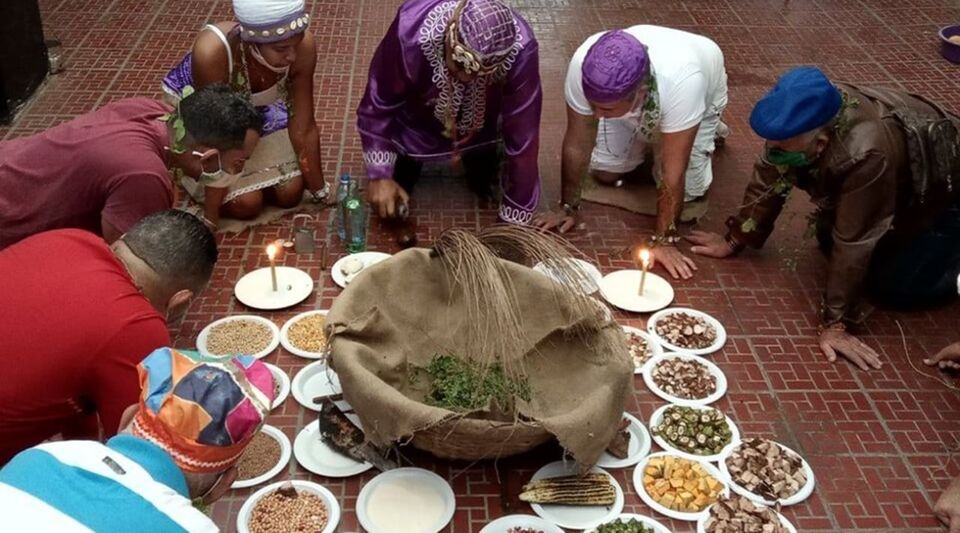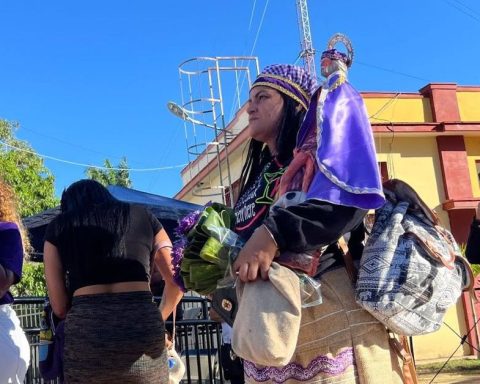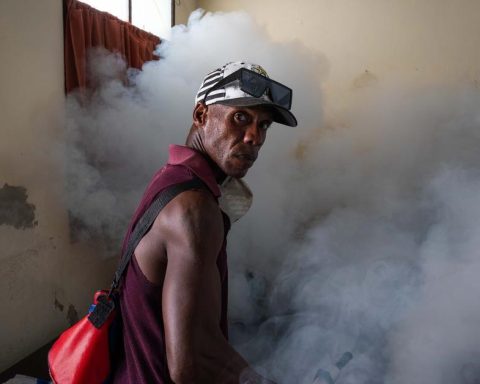Like a young fortune teller or a sorcerer from Arabian Nights, in the memory of Omar rites, spells, stories and words in ancient languages are mixed. Talkative, with tanned skin and alert eyes, he lives among the books and sacred objects of the Regla de Ocha.
Omar has tried to understand Santeria from practice, respect and rationality. Devoid of fanaticism and open to dialogue, there are few people in Santa Clara – a city that is a labyrinth of beliefs – with whom one can talk so seriously about the Afro-Cuban religious universe.
“Although I warn you,” he says, “that I will only talk about Ocha, because Palo Monte and the abakuáalso of African origin, are two subjects in which I have neither vital nor bookish experience”.
In that conversation with Omar, he tries to find out why Cuban celebrities and politicians are so interested in Santeria and what is the “state of health” of this religion on the island. The fact that there are related factions is intriguing. to the government and babalawos “independents” who predict their imminent downfall.
Politics, religion, fear, honor among initiates, superstition, the usurpation of ritual elements by State Security, to frighten dissidents… the list of topics would exhaust the serenity of a reasonable interlocutor. But Omar is patient, like an old sorcerer, and begins to look for the causes of the problem.
The Special Period and the new millennium brought more changes to the Rule of Ocha: initiations became more expensive and a process of commodification began
“The Afro-Cuban religion is everywhere,” he says. “It penetrates the jargon, the gestures, the imaginary, molds the national guapería, and even shapes the worst of Cubans, in a process where many elements come out to be replaced by others of disturbing origin.”
“The first sign of this ‘disaster,'” explains Omar, “can be found in what someone called the baby boom of the babalawos in the 1980s and 1990s”. This boom was produced thanks to Miguel Febles (1910-1986), a santero who “eased” the rigorous controls to initiate oneself in religion.
The center of the consecration of a Babalawo is the “foundation”, a orisha or fetish on which the ceremony is performed. Before Febles, the number of foundations was very small, and to start a new Babalawo it had to be loaned or rented, often from one city to another.
“Febles relaxed the rigor at the time of delivering the fetish”, affirms Omar, “in favor of the economic capacities of whoever wanted to receive it. That guaranteed an arithmetical growth in the number of consecrations”.
The Babalawo it had traditionally been molded according to criteria very similar to those of Freemasonry: it had to be heterosexual, “wise”, a good son, father and husband, with availability to advance in the study of religion. But, after the reform of Febles, that ideal was blurred and “people of a very varied nature began to be consecrated, among whom were many picklescrooks, pimps and professionals from different branches”.
The Special Period and the new millennium brought more changes to the Rule of Ocha: initiations became more expensive, a process of commodification began –monetary benefit before spiritual benefit– and the santeros immersed themselves in a kind of “success model” . Not to mention the “invention” of orishas to attract tourists who came looking for an “exotic” and Creole religion.
“In this new dynamic,” laments Omar, “people ask for three fundamental things: solving love problems with witchcraft or moorings; cleaning them to improve personal luck; and magical protection to deal with justice.”
He adds that “the hazardous conditions of life that Cubans face condition the search for security on an esoteric level, precisely because they want to control the chaos that is experienced daily through the intervention of magic.”
Omar refers, not without discomfort, to the Cuban artists who have made Santeria a kind of “stamp.” “Luna Manzanares walked from iyawo during the pharaonic funerals of Fidel Castro,” he says, “knowing that a iyawo You are prohibited from participating in funeral activities or entering cemeteries.”
“Kimiko and Yordi made their most famous video, The championdressed in iyawos, even though they knew that taking photos or appearing in a video is taboo in their state. But these artists did nothing more than reproduce what Chacal and Jakarta, and many others, had done at other times. Today the timberos celebrate with musical themes their access to the most misogynistic and exclusive cult of Ifá, according to the trend started by Adalberto Álvarez when it was made Babalawo“.
People pray, seek answers, trust in the “beyond” and consult all kinds of divinatory mechanisms to know how much longer they have to “hold out”
Omar does not speak of the “approach” of the leaders of the Communist Party to Santeria, considered an “unofficial religion” of the Central Committee, nor of the “saints” attributed to Díaz-Canel and other government figures. “I had no idea that elements of the Ocha, such as animals, were used to threaten or scare dissidents. That amazes me!” He says, when asked about the butchered birds in the doorways of several opponents’ houses.
“But don’t be fooled,” warns Omar, “the visibility of the practice has nothing to do with its good conservation.”
As happened in the Special Period, religion once again acquires a kind of “anesthetic” condition on the Island in the face of life’s difficulties. People pray, seek answers, trust in the “beyond” and consult all kinds of divinatory devices to know how much longer to “hold out.”
On the other hand, the Government has done everything possible to assimilate and organize, according to its parameters, the religious panorama of the Island. Entities such as the Council of Churches of Cuba and the Yoruba Cultural Association have an agenda defined by State Security, as verified by a recent report of the organization Prisoners Defenders, based in Madrid.
Santeria, practiced in a more or less orthodox way by many Cubans, not only faces the internal division and infiltration of the G2, but also the massive exodus that the Island is experiencing. babalawos and its believers to this phenomenon, its rigor or flexibility in the new rites, celebrated beyond the insular border, will largely determine the survival of this religion with several centuries of antiquity and tradition in Cuba.
________________________
Collaborate with our work:
The team of 14ymedio is committed to doing serious journalism that reflects the reality of deep Cuba. Thank you for joining us on this long road. We invite you to continue supporting us, but this time becoming a member of our journal. Together we can continue transforming journalism in Cuba.


















